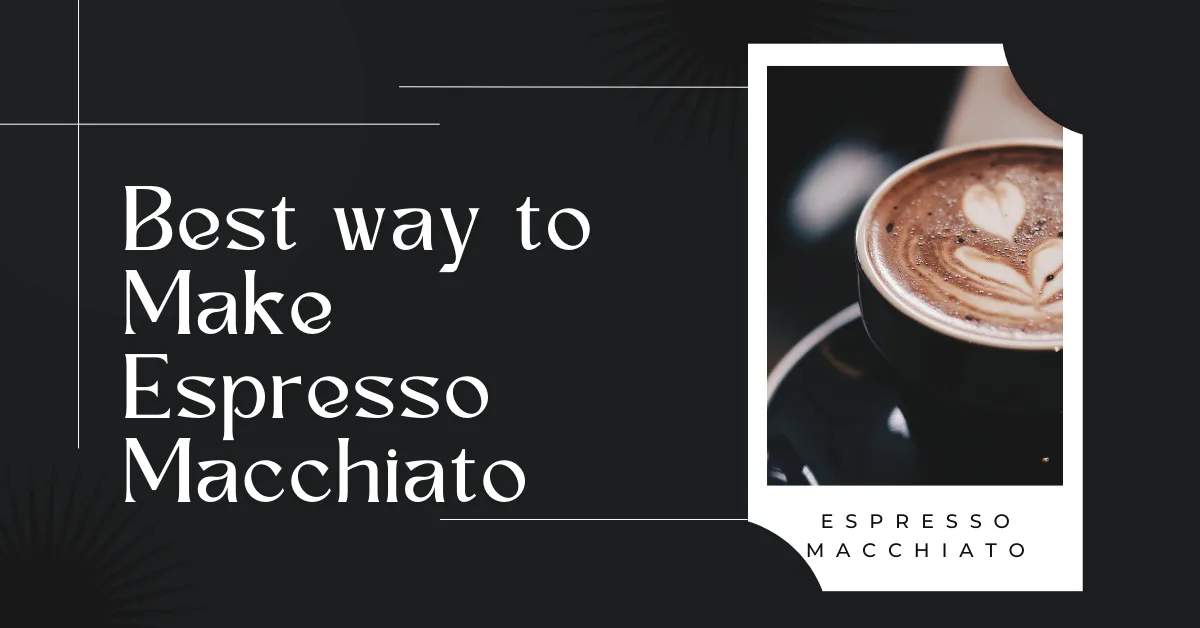As a barista, there were always those moments when a customer would order an Espresso Macchiato, and behind the counter, we couldn’t help but chuckle. I mean, why pay extra for a regular shot of espresso with just a dab of foam on top? It’s not like the foam adds any magical powers to the coffee—so what’s the big deal?
But, as amusing as it seemed, the Espresso Macchiato has become a staple on many café menus. So, why are people willing to shell out a bit more for what seems like just a small dollop of frothy milk?
Let’s break it down.
Table of Contents
What is an Espresso Macchiato?
“Macchiato” means “stained” or “marked” in Italian, and in this case, the drink refers to espresso that’s been “marked” with a small amount of frothed milk. Essentially, it’s just a shot of espresso with a tiny bit of foam on top. Nothing too complex or fancy—just pure, strong espresso, with a little soft foam to lighten the intensity.
You can think of it as a step between a plain espresso and a cappuccino. It gives just a hint of creaminess without compromising the bold flavor of the espresso.

Espresso Macchiato Recipe
Ingredients:
- 1 shot of espresso
- A small amount of frothed milk
Instructions:
- Start by brewing a shot of espresso.
- Steam and froth a small amount of milk, creating a thick, velvety foam.
- Pour the espresso into a small cup.
- Spoon just a dollop of foam on top to “mark” the espresso.
- Serve immediately and enjoy the subtle mix of strong coffee and creamy foam.
Why Pay Extra for Foam?
This is the million-dollar question—why do people love paying extra for a little foam? Here’s what I’ve gathered over the years:
- Texture Enhancement:
Believe it or not, that little bit of foam actually does change the experience. Espresso can be very strong and bitter for some, and the foam helps soften it just enough to make it smoother, but without adding the volume (and dilution) of milk that a latte or cappuccino would have. It’s still strong, but with a little creamy contrast. - Visual Appeal:
There’s something about the look of an Espresso Macchiato that feels refined. It’s simple, elegant, and gives the impression that you’re drinking something a little more special than just a regular shot of espresso. - Balance Without Overdoing It:
For people who find espresso too strong but don’t want to fully commit to a milk-heavy drink like a latte or cappuccino, the macchiato strikes a balance. You get the boldness of espresso, but just enough creaminess to soften the edges. - It Feels Like an Upgrade:
In a world where we’re constantly looking for little ways to “upgrade” our coffee experience, adding foam to an espresso makes it feel like a customized, high-end treat. It’s not just about the drink—it’s about feeling like you’re getting something just a little more premium.
What Makes a Bad Espresso Macchiato?
This simple drink can go wrong if the balance isn’t right:
- Too Much Foam:
If there’s too much foam, you’re drifting into cappuccino territory, which defeats the purpose of the macchiato. It should have just a small “mark” of foam—not an entire layer. - Weak Espresso:
Since the foam is just a light addition, the espresso needs to be strong and well-extracted. A weak or poorly brewed shot can make the drink taste flat and disappointing. - Watery Foam:
The foam on top should be thick and creamy, not watery or bubbly. If the foam is thin, it won’t add the creamy texture that makes the macchiato enjoyable.
Why the Foam Matters
You might be wondering, “Why does the foam matter so much if it’s just a little bit?” Here’s why:
- Texture Contrast:
The foam adds a soft, airy texture to the drink, which contrasts beautifully with the bold, thick espresso. It’s all about balance. Without it, the espresso would just hit you with its full strength right away, but with the foam, it eases you into the flavor. - A Softer Finish:
The foam gives the espresso a smoother finish, especially as it melts into the coffee. For those who find the bitterness of espresso too sharp, the foam provides a subtle creaminess that doesn’t overpower the drink.
Caffeine Content
An Espresso Macchiato contains the same amount of caffeine as a regular shot of espresso—about 63 milligrams. The foam doesn’t change the caffeine content, so if you’re ordering one for a caffeine boost, it delivers the same as any espresso.
Calories and Macros
| Nutrient | Amount per 1 oz Espresso Macchiato |
| Calories | 5-10 (depending on the amount of foam) |
| Protein | 0-1 grams |
| Carbohydrates | 0-1 grams |
| Fat | 0-1 grams |
| Caffeine | 63 milligrams |
Interesting Facts about Espresso Macchiato
- “Marked” by Foam: The word “macchiato” means “stained” or “marked,” which refers to how the foam marks the espresso, creating a small yet impactful addition.
- A Barista Classic: Despite its simplicity, the Espresso Macchiato remains a staple in cafés around the world, especially for those who love strong coffee but want just a touch of smoothness.
- Not to be Confused with Latte Macchiato: While both drinks contain “macchiato” in the name, they’re very different. A Latte Macchiato is mostly milk with just a shot of espresso, whereas an Espresso Macchiato is mostly espresso with a tiny bit of milk foam.
Conclusion
As amusing as it is for baristas when someone orders an Espresso Macchiato (because, yes, it really is just a shot of espresso with a tiny bit of foam), there’s actually something to appreciate about this drink. It’s all about balance. For people who want their espresso strong but not overpowering, the macchiato offers just enough creaminess to smooth things out without taking away from the coffee’s bold flavor.
So next time someone orders one, just remember—they’re paying for that little bit of luxury. It may be a simple touch, but sometimes, that’s all you need to turn a basic espresso into something just a little more special.








